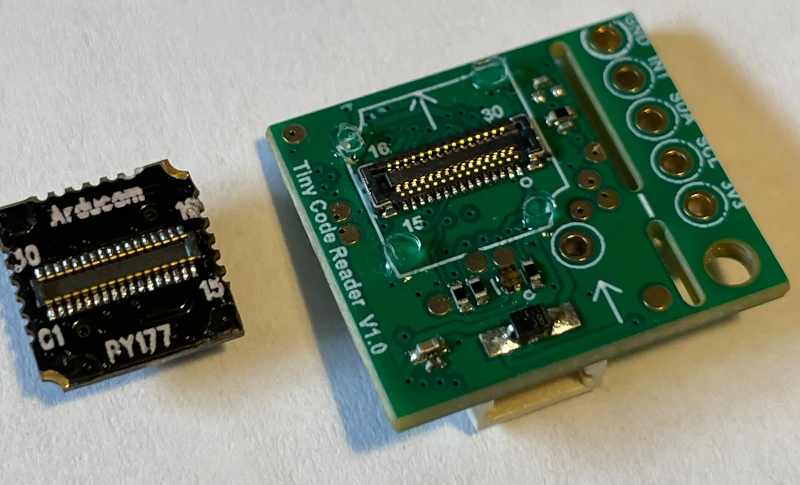Cardiology coding isn’t just about memorizing numbers—it’s the key to getting paid accurately and on time. Miss a detail, and your claim could hit a dead end. Common CPT codes in cardiology guarantee smooth billing and maximize revenues. If your practice struggles with coding complexities, partner up with professionals offering Cardiology Billing Services for error-free […] The post Top 10 CPT Codes Every Cardiologist Should Know appeared first on P3.
Cardiology coding isn’t just about memorizing numbers—it’s the key to getting paid accurately and on time. Miss a detail, and your claim could hit a dead end. Common CPT codes in cardiology guarantee smooth billing and maximize revenues. If your practice struggles with coding complexities, partner up with professionals offering Cardiology Billing Services for error-free practices leading to optimized financial performances.
Below are 10 essential CPT codes every cardiologist should know, along with tips for accurate usage and improved cardiologist reimbursement.
Why CPT Codes Matter in Cardiology Billing
Cardiology is packed with procedures—from simple ECGs to complex stent placements. Every step needs the right CPT code for smooth billing and compliance. While ICD-10 tells you why the procedure happened, CPT tells payers what you did— knowing CPT vs ICD-10 in cardiology means a step toward error-free claims. Let’s dive into the top 10 cardiology billing codes you need to master.
Top 10 Cardiology CPT Codes with Billing Insights
This reference work discusses ten major CPT codes that play a critical role in cardiology practice and provides detailed information on documentation requirements, billing considerations, and clinical applications for each code.
1. 93000 – Electrocardiogram (ECG), complete
Let’s start with one you probably use daily: CPT 93000 for a complete 12-lead ECG with interpretation and report. Sounds simple, right? But here’s the catch—if your report doesn’t clearly include both the test and interpretation, your claim might be underpaid or denied. So, double-check your documentation before hitting submit. Many practices confuse this code with 93010, which only covers the professional interpretation.
Tip: Ensure the interpretation and report are documented to avoid underpayment.
2. 93010 – ECG interpretation only
CPT code 93010 is applied when the cardiologist provides only the interpretation and report for an ECG performed elsewhere, such as in an emergency department or another clinic. This code represents the professional component of the test and is commonly billed when physicians are asked to review and interpret test results remotely.
Tip: Document all cardiac chambers and valves to support billing.
3. 93306 – Comprehensive transthoracic echocardiography
The echocardiogram is another cornerstone of cardiac diagnostics, and CPT code 93306 is used for a complete transthoracic echocardiogram that includes 2D imaging, M-mode, Doppler, and color flow Doppler. This test is indispensable for evaluating heart structures, detecting valve abnormalities, and assessing ventricular function.
Tip: Note the specific vessel and stent type to avoid claim denials.
4. 92928 – Percutaneous coronary stent placement
When treating blocked coronary arteries, cardiologists often perform percutaneous coronary intervention (PCI) with stent placement, which is billed under CPT code 92928. This code includes angioplasty when performed, but it applies only to a single major coronary artery or branch.
Tip: Note the specific vessel and stent type to avoid claim denials.
5. 92920 – Coronary angioplasty (PTCA)
CPT 92920 covers percutaneous transluminal coronary angioplasty (PTCA) without stent placement. This code is used when a balloon angioplasty is performed to restore blood flow, but a stent is not inserted. While this procedure has become less common due to the prevalence of stenting, it remains relevant in certain clinical scenarios.
Tip: Include pre- and post-procedure angiographic results in your report.
6. 93458 – Left heart catheterization with coronary angiography
Cardiac catheterization is a fundamental diagnostic tool for evaluating coronary artery disease, and CPT code 93458 represents left heart catheterization combined with coronary angiography. This code also includes supervision, interpretation, and reporting. It is commonly performed before interventions like PCI or as part of a diagnostic workup in patients with suspected coronary artery disease.
Tip: Ensure hemodynamic data and complete interpretation are included.
7. 93451 – Right heart catheterization
Unlike left heart catheterization, CPT code 93451 is used for right heart catheterization to measure pressures in the right atrium, right ventricle, and pulmonary artery. This test is critical for diagnosing conditions such as pulmonary hypertension and advanced heart failure.
Tip: Document oxygen saturation and cardiac output if measured.
8. 93350 – Stress echocardiography
Stress echocardiography, billed under CPT code 93350, evaluates how the heart performs under stress, whether induced by exercise or medication. This test is widely used to diagnose ischemia and assess coronary artery disease risk. Proper billing requires documentation of the stress agent used, test duration, and complete interpretation findings.
Tip: Include details of the stress protocol and comparison of rest vs stress images.
9. 93503 – Swan-Ganz catheter insertion
CPT code 93503 is assigned for the insertion and placement of a balloon-tipped catheter (commonly known as a Swan-Ganz catheter) in the pulmonary artery for hemodynamic monitoring. This procedure is frequently performed in critically ill patients or during major cardiac surgeries to assess cardiac output and guide fluid management.
Tip: Indicate clinical necessity and initial measurements for accurate claims.
10. 93653 – Comprehensive electrophysiology study with ablation
CPT code 93653 applies to a comprehensive electrophysiology (EP) study that includes both diagnostic mapping and ablation of arrhythmogenic tissue. This procedure is used to treat arrhythmias such as atrial flutter, supraventricular tachycardia, or ventricular tachycardia.
Tip: Record arrhythmia type, mapping details, and ablation endpoints.
Common Denial Reasons for These Codes
- Lack of medical necessity documentation
- Incorrect modifiers for bilateral or multiple vessels
- Using comprehensive codes when only partial services were provided
Best Practices for Accurate Cardiology Coding
- Stay Updated: CPT codes are revised annually; outdated codes can lead to rejections.
- Detailed Documentation: Clear notes support cardiologist CPT documentation and defend against audits.
- Use Experts: Outsourcing to Cardiology Billing Services ensures compliance, accuracy, and maximized reimbursement.
CPT vs ICD-10 in Cardiology – Know the Difference
While CPT codes in cardiology describe the procedures (what was done), ICD-10 codes define the diagnosis (why it was done). For example, CPT 93000 (ECG) may pair with ICD-10 code I48.91 (Atrial fibrillation, unspecified) for proper claim submission. Both codes are essential for accurate billing and compliance.
Why Partner with a Professional Billing Company?
Cardiology billing is complex—multiple procedures, modifiers, and strict payer rules make errors likely. Partnering with a trusted name like P3 Healthcare Solutions for Cardiology Billing Services ensures:
- Faster reimbursements
- Reduced claim denials
- Accurate coding and compliance
Final Thoughts
Mastering these codes is only half the job—getting documentation right is where the real challenge lies. And if you’re tired of juggling compliance, modifiers, and payer rules, outsourcing can take that weight off your shoulders. With Cardiology Billing Services byP3 Healthcare Solutions, you can stop worrying about compliance and claim rejections.
Frequently Asked Questions (FAQ)
i. What are the most used CPT codes in cardiology?
The most commonly used CPT codes in cardiology include:
- 93000 – Electrocardiogram (ECG/EKG)
- 93306 – Complete transthoracic echocardiogram
- 93458 – Left heart catheterization
- 92928 – Coronary angioplasty with stent
- 93015 – Cardiovascular stress testing
These CPT codes represent core procedures in cardiology and are critical for proper billing and reimbursement.
ii. Can incorrect coding affect cardiologist reimbursement?
Absolutely. Incorrect coding can lead to denied claims, delayed payments, or even audit risks. For cardiologists, ensuring accurate documentation and CPT code selection is key to maintaining financial health. That’s why many practices rely on professional Cardiology Billing Services to minimize errors and optimize revenue.
iii. What’s the difference between CPT and ICD-10 in cardiology?
The key difference lies in their purpose:
- CPT codes (Current Procedural Terminology) describe what was done—the tests, procedures, or services a cardiologist performed.
- ICD-10 codes (International Classification of Diseases) explain why—the diagnosis or medical reason behind the procedure.
Both coding systems work together for complete billing and compliance in cardiology.
iv. Why should cardiologists consider using Cardiology Billing Services?
Cardiology billing is complex and time-sensitive. Outsourcing to specialized Cardiology Billing Services helps practices:
- Stay compliant with payer rules
- Avoid costly coding errors
- Focus on patient care, not paperwork
- Maximize claim acceptance and reimbursement
Companies like P3 Healthcare Solutions offer expert support tailored to cardiology practices.
The post Top 10 CPT Codes Every Cardiologist Should Know appeared first on P3.










